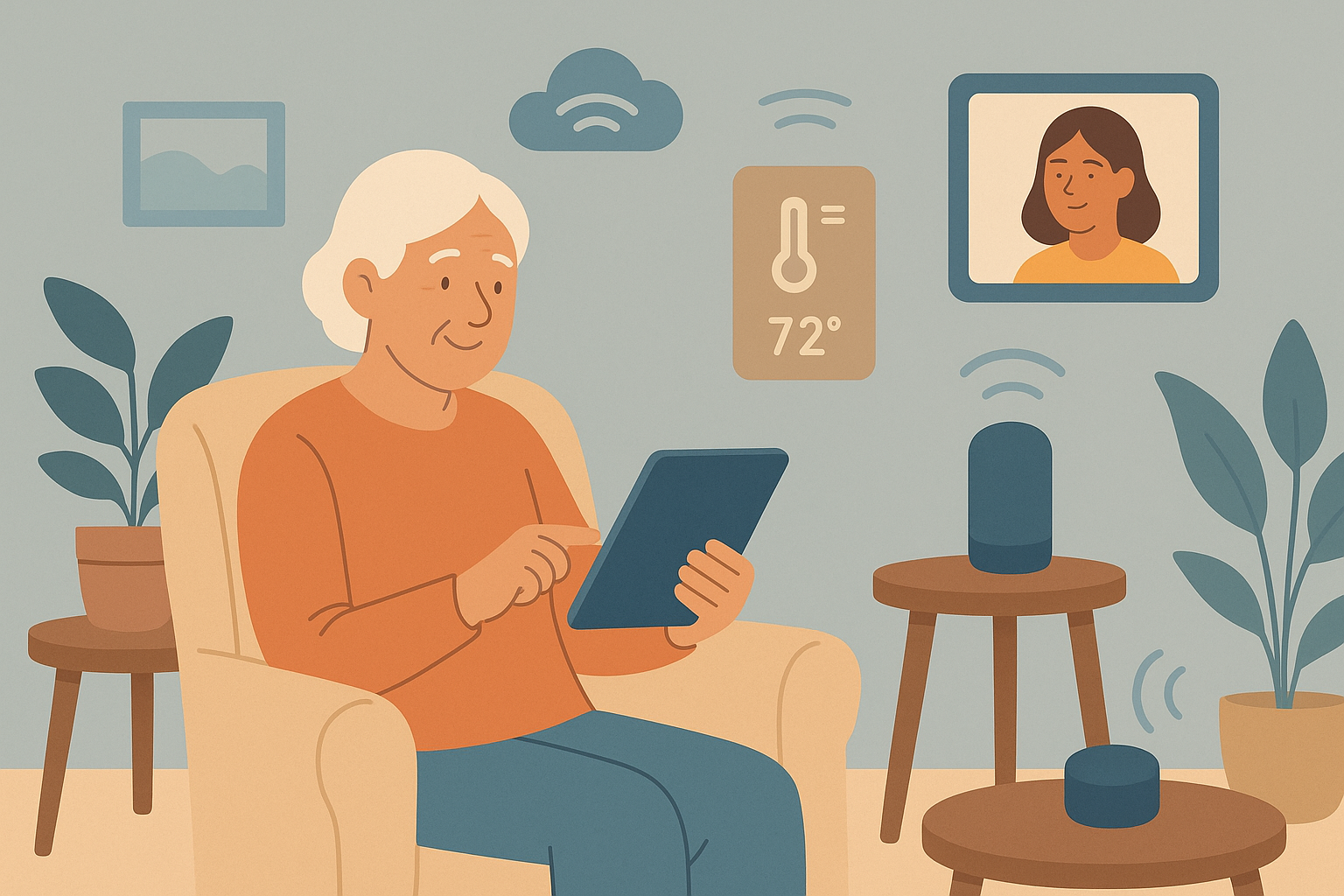
Technology and AI Solutions
At Smart Care with Stella, we use technology and AI to help families stay connected, supported, and informed — whether they live across the street or across the country. Modern AI and technology are changing the way we care for older adults, providing powerful tools that support independence, safety, and connection. For families, these innovations offer peace of mind and real-time feedback, while empowering older individuals to live confidently and comfortably in their own homes.
Smart Elder Care
-
What Is Smart Elder Care?
Smart elder care is the integration of artificial intelligence (AI), connected devices, and digital tools into the daily lives of older adults to help them age safely, independently, and with dignity. It bridges the gap between traditional caregiving and modern innovation, offering support without replacing the human element.
At its core, smart elder care uses technology to anticipate needs, track wellness, and enhance safety, all while giving families more peace of mind and seniors more confidence to live at home.
-
These systems are called “smart” because they don’t just follow instructions—they learn, adapt, and respond to changes in behavior or health. They go beyond simple reminders or alarms by offering:
Predictive insights (e.g., noticing reduced mobility or increased bathroom visits)
Automated actions (e.g., turning on lights when someone gets up at night)
Proactive alerts (e.g., notifying a caregiver if a daily routine is missed)
This transforms caregiving from reactive to proactive and preventative.
-
Smart elder care is not meant to substitute emotional connection or hands-on support. Instead, it:
Fills in the gaps between visits or check-ins
Offers 24/7 passive monitoring without invading privacy
Gives caregivers access to real-time data and early warning signs
Allows older adults to maintain more independence, longer
For example, a voice-activated assistant might remind someone to take their medication—but the caregiver still provides encouragement, context, and emotional support.
-
Smartwatches that detect falls
Wearable devices monitor sudden movements and send alerts immediately.Motion sensors
Track activity patterns to detect unusual inactivity or movement.Smart pill dispensers
Automate medication schedules and remind seniors when it’s time to take meds.Home hubs with voice control
Control lights, locks, and appliances using simple voice commands.Behavior-tracking AI
Analyzes patterns to provide personalized care insights and alerts.
Key Benefits of Smart Care
How AI Supports Independent Living
Aging doesn’t have to mean giving up autonomy. In fact, smart technology is enabling many older adults to maintain independence longer and more safely than ever before.
Smart home technology offers subtle, seamless support:
Voice assistants like Alexa or Google Home help with reminders, weather updates, and music, without needing to press buttons.
Motion-activated lights reduce the risk of nighttime falls.
Automated thermostats adjust for comfort without requiring manual control.
Digital pill dispensers send reminders and even notify caregivers if a dose is missed.
These tools offer a blend of safety, convenience, and autonomy, giving older adults more control over their environment while minimizing risks.
Real-Time Monitoring and Alerts for Families
Caring from a distance is easier with AI. Modern systems monitor subtle behaviors and provide real-time updates, allowing families and caregivers to stay informed and proactive.
What AI Can Detect:
Missed medications or meals
Decreased movement, indicating fatigue or depression
Changes in sleep routines, which may signal a health issue
Wandering behavior, a concern for those with dementia
When something unusual happens, families get instant alerts on their phones—
turning data into action before small issues become emergencies.
This type of support brings peace of mind to families while giving older adults more
freedom in their daily lives.
Top Tips on How to Get Started with Smart Technology
Start small: Begin with one simple device, like a voice assistant or smart light.
Involve your loved one: Let them explore and give input on what feels comfortable.
Make it familiar: Choose tech that fits into their daily routine naturally.
Customize it: Adjust settings and alerts to suit their preferences and needs.
Add slowly over time: Gradually introduce new tools to avoid overwhelm and build confidence.


